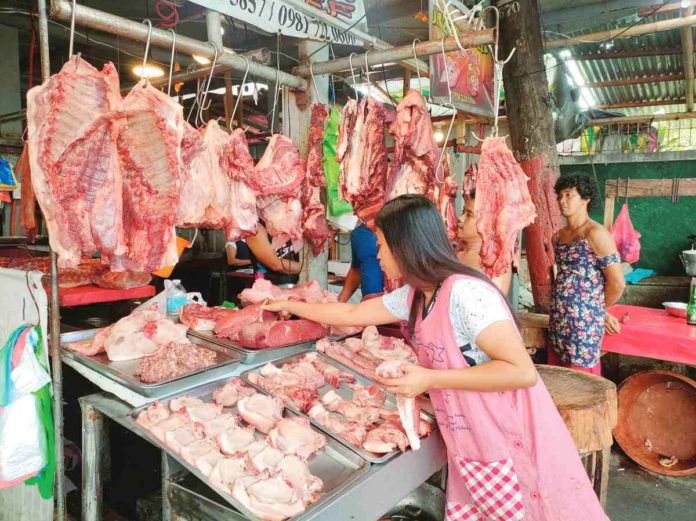
ILOILO – Following a surge in pork prices, discussions have emerged on whether the provincial government should implement a price ceiling to mitigate the impact on consumers.
As of March 19, the Provincial Veterinary Office reported an average pork price of P383 per kilogram, with the highest price at P400 and the lowest at P320.
Seventeen towns have seen prices peak at P400 per kilogram, while Igbaras has the lowest price at P320.
The 17 towns are Alimodian, Anilao, Barotac Nuevo, Barotac Viejo, Cabatuan, Calinog, Dumangas, Estancia, Guimbal, Leganes, Lemery, New Lucena, Pototan, Pavia, San Enrique, San Joaquin, and San Miguel.
Gov. Arthur Defensor Jr. said he could not unilaterally impose a price ceiling through an executive order, as the Local Price Coordinating Council, composed of the Department of Agriculture, Department of Trade and Industry, National Economic and Development Authority, and representatives from the business and consumer sectors, monitors and regulates pork prices.
Instead, the governor said, he could only recommend action to the council and the Department of Agriculture.
Defensor also said a meeting with the council might not be immediately necessary as the provincial swine inventory has increased by approximately 5,000 heads, which could potentially lower market prices.
He noted, too, that backyard hog raisers are beginning to repopulate, suggesting a future increase in pork supply.
Pork prices in towns such as Santa Barbara and Pavia have shown slight reductions (P400, from the previous P420), indicating potential market adjustments.
The current situation is influenced by factors including the African Swine Fever outbreak since October 2022 and inflation, which have led to supply shortages and increased costs for inputs like feeds and logistics.
The Provincial Veterinary Office, in collaboration with the Department of Agriculture, is processing requirements to start a sentineling program in April 2024 to facilitate the repopulation of commercial farms.
This program aims to convert areas from “red zones” to “pink zones”, enhancing biosecurity measures and surveillance to manage and prevent African Swine Fever spread, said PVO head Dr. Darel Tabuada.
Under the red zone, the movement of live pigs, pork, pork products (fresh/frozen pork products and uncooked processed pork products, except cooked and canned processed pork products), and swine genetic materials is prohibited.
Areas under pink (buffer) zone include municipalities or cities where ASF is not detected but demarcated immediately around the red zone when an area has been confirmed as an infected zone.
The pink (buffer) zone is aimed at preventing and managing spillover of cases from the red (infected) zone through risk mitigation measures such as biosecurity and surveillance.
Towns currently seeking conversion from a red zone to a pink zone are Santa Barbara, Batad, San Miguel, Oton, New Lucena, BanTe, Barotac Viejo, Dingle, Mina, Concepcion, Leganes, Janiuay, Lambunao, and San Enrique.
Meanwhile, here are the current prices of pork in public markets: Ajuy (P380), Alimodian (P400), Anilao (P400), Badiangan (P380), Balasan (P380), Banate (P390), Batad (P350), Bingawan (P390), Barotac Nuevo (400), Barotac Viejo (400), Cabatuan (P400), Calinog (P400), Carles (P350), Concepcion (P380), Dingle (P380), Dueñas (P380), Dumangas (P400), Estancia (P400), Guimbal (P400), Igbaras (P320), Lambunao (P380), Leganes (P400), Lemery (P400), Leon (P380), Maasin (P380), Miag-ao (P360), Mina (P380), New Lucena (P400), Oton (P360), Passi City (P380), Pavia (P400), Pototan (P400), San Dionisio (P370), San Enrique (P400), San Joaquin (P400), San Miguel (P400), San Rafael (P380), Sara (P380), Santa Barbara (P400), Tigbauan (P360), Tubungan (P360), and Zarraga (380)./PN



